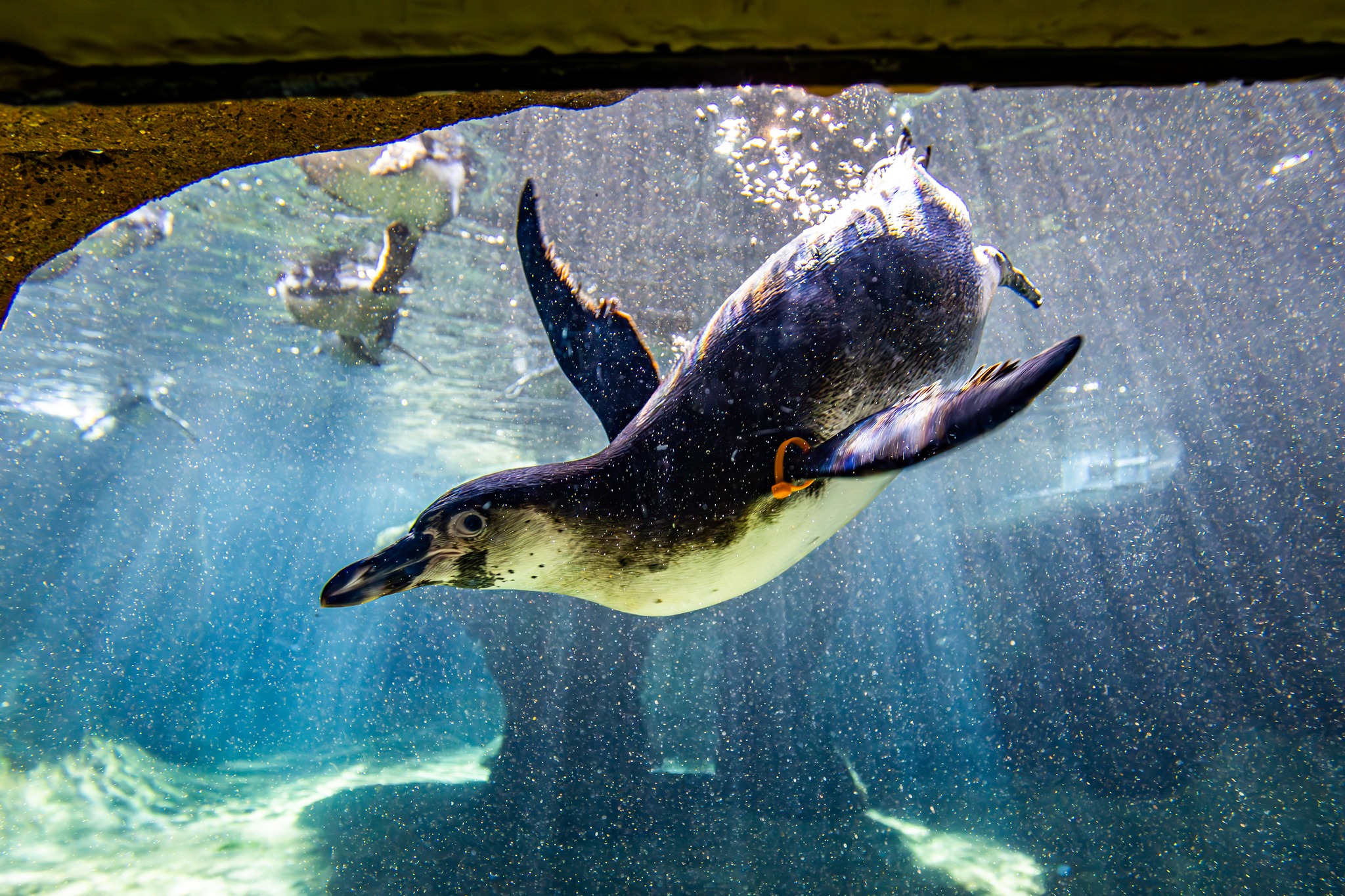- Overview of Humboldt Penguins and Their Habitat
- Importance of the Underwater Observation Window
- Conservation Efforts for Humboldt Penguins
- Behavioral Insights Observed Through the Window
- Interactive Learning Experiences at the Zoo
Humboldt penguins are fascinating creatures native to the coasts of Peru and Chile. As you step into the Rainforest Passage at the zoo, you are greeted by the sight of these lively birds swimming gracefully beneath the water. The underwater observation window allows visitors to witness the Humboldt penguins engaging in their natural behaviors, offering a rare glimpse into their lives.
The habitat of the Humboldt penguin reflects its natural environment. These birds are typically found in rocky shorelines with a temperate climate. Their diet mainly consists of small fish, which they catch through agile swimming techniques. The design of their aquatic habitat aims to replicate these natural conditions, helping to keep the penguins healthy and engaging. The intelligent use of temperature-controlled water keeps the environment comfortable for the penguins while allowing for an educational experience for visitors.
The underwater observation window serves a significant purpose beyond just giving people a view. It enhances the connection between humans and wildlife. As you watch the penguins swim by, you may notice their keen curiosity. These birds often approach the glass, allowing for an intimate encounter that highlights their inquisitive nature. The window acts as a bridge between our worlds, fostering an appreciation for the creatures that inhabit our oceans.
Conservation efforts focus on protecting the Humboldt penguin, which has been classified as vulnerable due to habitat degradation and climate change. Breeding programs and rehabilitation initiatives are key to ensuring the survival of these incredible birds. Engaging visitors through educational programs can help raise awareness about the challenges they face. Encouraging stewardship of their natural habitats increases the likelihood of positive change.
Observation through the underwater window offers insights into the social dynamics of Humboldt penguins. They have complex social structures and often demonstrate strong bonds with their partners and offspring. Watching their interactions can evoke a sense of empathy, encouraging visitors to think critically about the importance of biodiversity and ecosystem health.
The educational components surrounding the Humboldt penguins extend beyond just observation. Many zoos provide opportunities for visitors to learn about the specific care these animals receive. Daily feeding sessions, training demonstrations, and informational signage contribute to an enriched learning experience. Children and adults alike benefit from hands-on programs that teach the significance of wildlife conservation.
Monitoring the health of the Humboldt penguin population is crucial. Research data collected on their behavior, breeding habits, and health indicators can inform conservation strategies. Regular assessments help zoos and wildlife organizations understand the challenges these animals face in the wild, further guiding conservation efforts.
The Humboldt penguin is an ambassador for its species. By observing their activities, visitors gain insight into their daily lives, enhancing awareness of the environmental issues that impact marine ecosystems. The educational programs provided by zoos create a ripple effect, inspiring individuals to take action in their communities.
Understanding the behavioral traits of Humboldt penguins enriches the experience of visiting the zoo. Their playful antics while swimming, diving, and interacting with one another showcase their intelligence and adaptability. This information can spark interest in further studies about marine biology and conservation practices.
As you walk through the zoo and observe the Humboldt penguins, it is impossible to overlook the interactive elements available to enhance the experience. Many zoos offer touch pools, feeding kiosks, and educational talks that facilitate direct engagement with wildlife. These elements make learning more enjoyable and may inspire an enduring interest in marine conservation.
Another aspect to consider is the role of zoos in global conservation efforts. Many institutions partner with organizations dedicated to the preservation of biodiversity. These collaborative efforts target threats facing various species, including the Humboldt penguin. The educational programs developed in conjunction with these partnerships promote awareness, emphasizing the importance of conservation on a global scale.
The underwater observation window enhances the connection between visitors and the wonders of marine life. By providing a direct view into the daily life of Humboldt penguins, it encourages a deeper understanding of their existence. The experience fosters a sense of curiosity, inviting individuals to explore further into the complexities of marine ecosystems.
As curiosity about the ocean grows, newcomers may also be introduced to broader topics related to marine conservation, such as the impact of plastic pollution, overfishing, and climate change. Educational programs help to contextualize the plight of the Humboldt penguin within these larger themes, promoting a comprehensive understanding of conservation challenges.
Engagement with wildlife through observation can lead to meaningful conversations about environmental stewardship. Many visitors leave the zoo with increased awareness and a desire to support conservation initiatives. This trend encourages collective responsibility as people become more inclined to protect the places that support diverse wildlife.
Overall, the experience provided by the underwater observation window allows for a richer understanding of the lives of Humboldt penguins. Observing them up close adds an element of wonder, pushing visitors to reflect on their roles in preserving marine habitats. The insight gained helps to ignite a passion for wildlife conservation, increasing the number of advocates dedicated to protecting marine species and their environments.
Through direct encounters with wildlife, the challenges these species face become more tangible. The Humboldt penguin serves as a symbol for marine conservation, reminding us of our interconnectedness. By learning and engaging with living creatures, individuals can unite in efforts to protect our oceans and their inhabitants.
What makes this interaction even more significant is its potential for inspiring collective action. Every visitor who leaves the zoo with a newfound passion for marine conservation contributes to the larger movement to protect wildlife. Whether through advocacy, education, or personal lifestyle changes, these small actions collectively lead to meaningful impacts.
Finally, maintaining the health and well-being of Humboldt penguins in captivity mirrors the need for broader conservation efforts in their natural habitats. The knowledge gained from observing their behavior informs future breeding programs. Ultimately, this creates a sustainable population that has the potential to thrive in the wild.
The opportunity to experience the Humboldt penguins through the underwater observation window is an invitation to connect deeply with marine life. Observing their interactions fosters empathy and understanding while contributing to a growing base of advocates for conservation. Each gaze into the water brings humanity closer to the delicate balance that exists within our oceans and the urgent need to protect it.
*****
Source Description
A window into the sea …where the sea looks back at you! 🌊😉
See the Humboldt penguins (or be seen by them) for yourself through the underwater observation window found within the Rainforest Passage.
Alt-text: A Humboldt penguin swims down to curiously peer through the observation window glass of its habitat at the Zoo.


